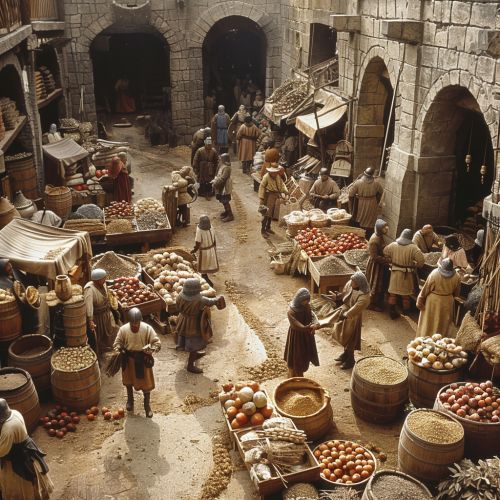Capitalism
Origins and Evolution of Capitalism
Capitalism, as a socio-economic system, has its roots in the medieval period, although the term itself was coined much later, in the mid-19th century. The system evolved from the feudal economic structure, which was characterized by the ownership of land by a small elite class, and the labor of the majority, the serfs, who worked the land in exchange for protection.


The transition from feudalism to capitalism was gradual and marked by several key developments. The enclosure movement in England, for example, was a significant factor in this transition. This was a process where common lands, previously accessible to all for farming and grazing, were fenced off and privatized. This led to a displacement of the rural population and an increase in the urban workforce, setting the stage for the industrialization of the economy.
Characteristics of Capitalism
Capitalism is characterized by private ownership of the means of production, where goods and services are produced for profit. The economic decisions regarding investment, production, and distribution are primarily made by individuals and corporations in the market, rather than by a central authority.
In a capitalist economy, competition and the pursuit of profit drive innovation and efficiency. The invisible hand theory, proposed by economist Adam Smith, suggests that the self-interested actions of individuals in the market can lead to beneficial outcomes for the society as a whole.
Types of Capitalism
There are several types of capitalism, each with its own unique characteristics and variations in the degree of government intervention, economic freedom, and social welfare.
1. Laissez-faire capitalism: This is a free-market system with minimal government intervention. The term "laissez-faire" is French for "let do", reflecting the philosophy that markets should be left alone to regulate themselves.
2. State capitalism: In this system, the state owns and controls major sectors of the economy, while allowing for private enterprise in other sectors.
3. Social market economy: This is a form of capitalism that incorporates social policies for the purpose of establishing fair competition and a comprehensive welfare system.
4. Corporate capitalism: This is characterized by the dominance of large corporations in the economy.
Capitalism and Globalization
Capitalism has been a major driving force behind globalization, the process of interaction and integration among people, companies, and governments worldwide. The spread of capitalist economic principles across the globe has led to an interconnected world economy, where goods, services, and capital flow across national borders with relative ease.


However, the globalization of capitalism has also led to debates about its impact on economic inequality, environmental sustainability, and cultural homogenization.
Criticisms and Alternatives to Capitalism
Despite its widespread adoption, capitalism has been subject to various criticisms. Critics argue that capitalism can lead to economic inequality, exploitation of workers, environmental degradation, and cyclical economic crises.
Alternatives to capitalism include socialism, where the means of production are owned and controlled by the state or the community, and communism, a classless society where all property is publicly owned and each person works and is paid according to their abilities and needs.
